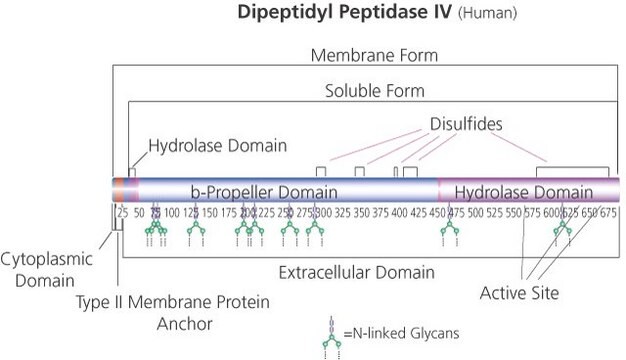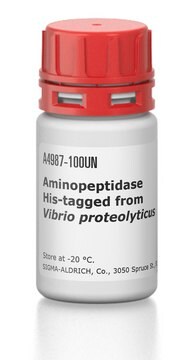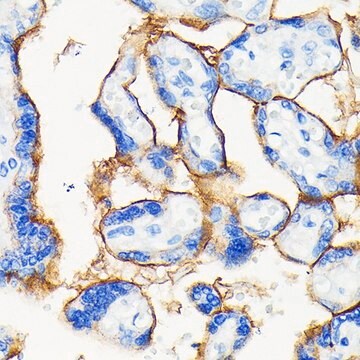D3321
Dipeptidyl Peptidase VII human
recombinant, expressed in Sf9 cells
Synonym(s):
DPP7, Quiescent cell proline dipeptidase
About This Item
Recommended Products
recombinant
expressed in Sf9 cells
Quality Level
form
solution
specific activity
≥1,500 units/μg protein
≥1500 units/μg protein
mol wt
89.1 kDa
relevant disease(s)
diabetes; cardiovascular diseases
shipped in
dry ice
storage temp.
−70°C
Application
Biochem/physiol Actions
Physical properties
Unit Definition
Physical form
Signal Word
Danger
Hazard Statements
Precautionary Statements
Hazard Classifications
Eye Dam. 1 - Repr. 1B - Skin Corr. 1C
Storage Class Code
6.1C - Combustible acute toxic Cat.3 / toxic compounds or compounds which causing chronic effects
WGK
WGK 2
Regulatory Listings
Regulatory Listings are mainly provided for chemical products. Only limited information can be provided here for non-chemical products. No entry means none of the components are listed. It is the user’s obligation to ensure the safe and legal use of the product.
ISHL Indicated Name
Substances Subject to be Indicated Names
ISHL Notified Names
Substances Subject to be Notified Names
Cartagena Act
Cartagena Act Listed
JAN Code
D3321-10UG:
D3321-BULK:
D3321-VAR:
D3321-10UG-PW:
Certificates of Analysis (COA)
Search for Certificates of Analysis (COA) by entering the products Lot/Batch Number. Lot and Batch Numbers can be found on a product’s label following the words ‘Lot’ or ‘Batch’.
Already Own This Product?
Find documentation for the products that you have recently purchased in the Document Library.
Our team of scientists has experience in all areas of research including Life Science, Material Science, Chemical Synthesis, Chromatography, Analytical and many others.
Contact Technical Service









